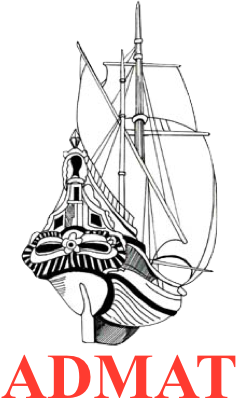ADMAT
The Tile Wreck Maritime Archaeological Project
Monte Cristi, Dominican Republic, Caribbean
Photographs From The 2013-2014 Field Season
July 2013
John and his international team of student maritime archaeologists, as they travel through the mangroves to The Tile Wreck
The purpose of the July survey was to answer these questions if possible.
Following the success of the May project, the Team decided to continue working on the area where the grenade had been found as well as conduct a metal detector survey to the north of the wreck site. A number of grenades were located in a small area, giving the impression that a box of loaded grenades was in one location and as the ship broke up the grenades rolled around before the sand and mud covered them. Just over 30 armed grenades were located, and interestingly all of them had the wooden fuses in them and were all primed ready to use. This gives an indication that the ship was expecting to enter a battle area, otherwise they would not be primed and ready to use. This seemed a large amount for a merchant ship even though she was a well armed merchant ship. The grenades were clearly a very close quarters weapon and from a marine viewpoint, possibly a weapon of last resort, to prevent the ship from being boarded by an enemy ship. The grenades were located with the AX2000 proton magnetometer which was deployed at the start of the survey.
27.7 meters due north of the mast step and 1.3 metes due east the metal detector gave a large ring. After the dredge had been relocated to this position a bent lead artefact which could be a hawser pipe or it could be a pisdale (a historic form of lead urinal), it is difficult to tell as one end was bent in. If this artefact is in fact a hawser pipe then it further supported the hypothesis that the bow was the seaward side of the wreck and was in effect bow into the wind. As the survey expanded no other hawser pipe was found which was disappointing.
There were two groups for the July August project with participants coming from China, Canada, Dominican Republic, USA, Switzerland and the UK.

